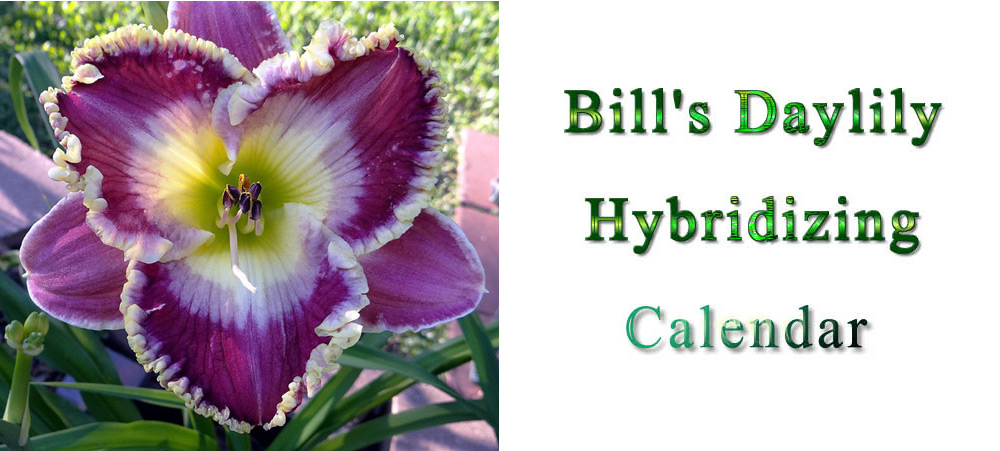Here along the gulf coast, the best time to plant new daylilies is in the fall. Because we have such a mild climate the plants will continue to grow throughout the winter months. This allows them to fully establish their root systems in preparation for the following summer.
I always check out the new fall introductions on various websites as they are announced and keep a list of interesting daylilies. Now it's now time to get serious and decide what I'm going to purchase.
Because I have limited space that is pretty much 100% utilized, in order to plant new daylilies I have to remove an equal number of existing daylilies. So the first step is to decide what I'm willing to part with. For the most part the list consists of daylilies I am no longer using in my hybridizing. Replacing a number of cultivars each year gives me the chance to see new faces in the garden each season.
Once I know how many I'm going to buy, I then set my budget. The new introductions can be quite expensive and I could easily spend myself into the poorhouse without a budget (which I make myself stick to).
I should probably mention that the most recommended method of selecting new daylilies to purchase is to see them actually growing in a garden, preferably one with a similar climate. My problem is that my day job keeps me from traveling during bloom season. That means I'm pretty much limited to purchasing over the internet.
Now the fun begins. Starting with my favorite hybridizers I check out the newer offerings on their websites. I look for plants that will fit in with my hybridizing goals. I primarily use the websites that list branching and bud counts for their introductions. I don't even consider daylilies with bud counts under 20 and bud counts over 40 get my attention. I do look at some websites that don't list bud count but only for that really special looking flower. If I see something that 'knocks my socks off', I can always call the hybridizer or grower to find out about the average branching and bud count. This is how I create the 'must have' entries in my wish list.
Every year many daylily growers will have some sort of sale. Currently the most popular offering seems to be the buy 1, get 1 free sale. I don't have time to check out all the sales so I take one or two sellers that I know send good plants and review their sale lists. First I look up the cultivar in the AHS online database. This gives me the statistical information about the cultiver including a picture. If the hybridizer included bud counts in the registration, the online database will show that too. Any that catch my eye and offer some breeding potential are also added to my wish list. Many of these sale selections turn out to be good breeding plants.
Lastly, I have to select those cultivars from the wish list I will actually purchase while keeping within my budget. It is a combination of new introductions and sale plants that will replace most of the plants designated to be retired from my garden. I don't remove anything from the wish list. I leave unselected plants on the list in case some of the the one's I've selected to purchase are no longer available.
The final step is to call the growers and place my orders.
In case you're wondering what I do with the daylilies I end up retiring from my garden, they go into my spring daylily yard sale. The proceeds from that sale are where the money for new purchases comes from. It's a cycle that has worked for me for years and provides me the ability to purchase newer daylilies that I otherwise could not afford. After all, this is just a hobby for me (smile).

